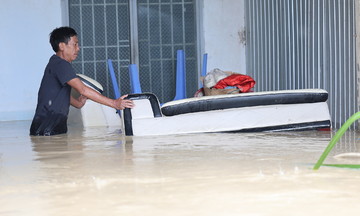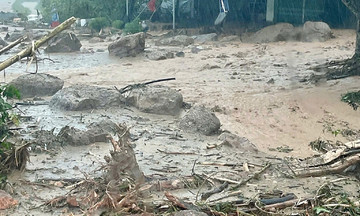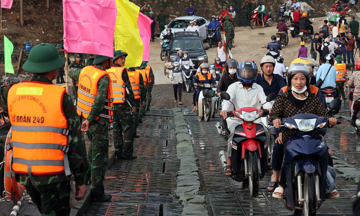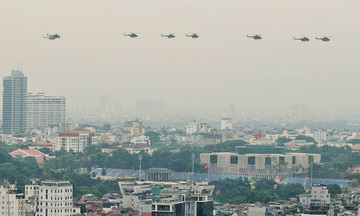According to the National Center for Hydro-Meteorological Forecasting (NCHMF), at 7 p.m., the typhoon's eye was located in the northeastern area of the South China Sea, with maximum sustained winds near the center reaching 117 km/h, equivalent to a category 10-11 typhoon, with gusts reaching category 14. By 7 p.m. on 20/7, the typhoon is predicted to maintain its course and speed, intensifying to category 11-12, with gusts reaching category 15. At that time, it will be approximately 220 km east of the Leizhou Peninsula (China).
By the evening of 21/7, the typhoon may reach category 10-11, with gusts of category 13, over the northern area of the Gulf of Tonkin. It is then expected to shift west-southwest at 15 km/h, making landfall in the northern delta region with an intensity of around category 8, with gusts reaching category 10.
The Japan Meteorological Agency forecasts the typhoon will peak at 108 km/h on 20/7, then move close to the Chinese mainland and veer towards the northern coastal provinces of Vietnam. The Hong Kong Observatory predicts that the typhoon will maintain wind speeds of 110 km/h in the Gulf of Tonkin, decreasing to 90 km/h as it approaches Hai Phong - Quang Ninh.
Hoang Phuc Lam, Deputy Director of the NCHMF, said the typhoon could reach a maximum intensity of category 12-13, with gusts of category 14-15, east of the Leizhou Peninsula. As the area of rain and strong winds shifts west and south, thunderstorms may appear from 20/7-21/7 while the typhoon is still offshore. It's expected that from the morning of 22/7, the typhoon will directly impact the coastal provinces from Quang Ninh to Thanh Hoa, causing strong winds along the coast and widespread heavy rain in northern and north-central Vietnam.
 |
Projected path and impact area of Typhoon Wipha, evening of 19/7. Photo: NCHMF |
Projected path and impact area of Typhoon Wipha, evening of 19/7. Photo: NCHMF
Due to the typhoon's influence, the northern area of the South China Sea will experience strong winds of category 8-10, increasing to category 11-12 near the typhoon's center, with gusts reaching category 15 and waves 5-7 meters high. From 21/7, the northern Gulf of Tonkin (including Bach Long Vi, Co To, Cat Hai, and Cat Ba) will see winds gradually increase to category 6-7, later rising to category 8-9, with category 10-11 near the typhoon's center, gusts reaching category 14, and waves 2-4 meters high, increasing to 3-5 meters near the center.
From the afternoon of 21/7, the southern Gulf of Tonkin will experience winds increasing to category 6-7, reaching category 8-9 near the typhoon's center, with gusts of category 11 and waves 2-4 meters high. Vessels operating in these areas should take extra precautions.
At the standing meeting of the National Steering Committee for Natural Disaster Prevention and Control on 19/7, leaders from the Ministry of Agriculture and Rural Development noted that Typhoon Wipha has a trajectory similar to the previous Typhoon Yagi. While its intensity may not be as strong, there is a risk of widespread heavy rain in northern Vietnam.
With 137 reservoirs severely damaged and 47 under construction in the region, and reservoir capacity currently at 59-85% of design capacity, the Ministry has requested relevant agencies to calculate appropriate flood discharge plans to ensure the safety of the structures and "avoid a repeat of the incident at Thac Ba hydropower plant last year".
Since the beginning of the year, three typhoons have formed in the South China Sea. Typhoon Danas did not affect the mainland, while Typhoon Wutip in June caused heavy rain from 11/6 to 13/6 in the central region. This period of heavy rain and flooding resulted in 11 deaths in Quang Tri and Thua Thien Hue, flooded over 3,500 homes, and damaged 88,000 hectares of crops. Many transportation routes experienced landslides and flooding; numerous flights from Da Nang were delayed or canceled; and the final night of a beauty pageant had to be rescheduled due to rising water levels in the Huong River.
Gia Chinh












